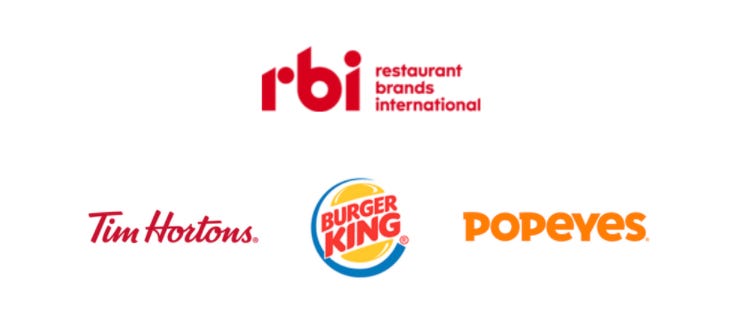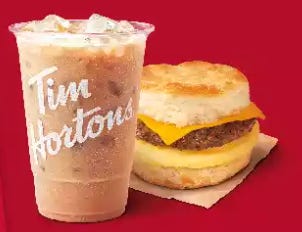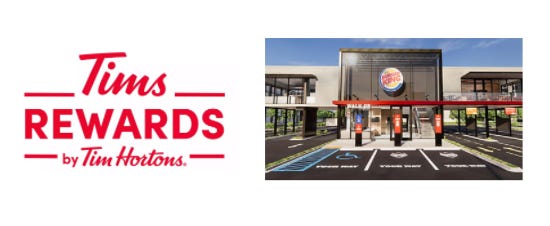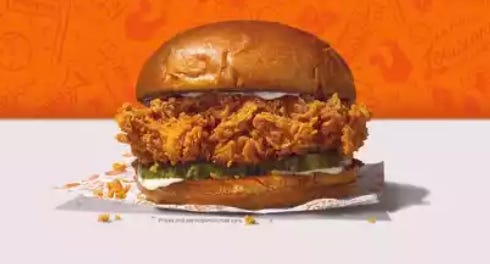Disclaimer: This is not investment advice. I am merely detailing and documenting my investment and thought process. Please do your own due diligence before investing.
Restaurant Brands International common shares are listed on the NYSE with the ticker QSR, but I will refer to the company as RBI instead of QSR, so as to not confuse the company for the short-hand for the industry which RBI is in - Quick Service Restaurants
If you have no/little knowledge of the QSR industry, you should first read my previous post here, where I gave a brief overview of the industry, including its economics and trends.
This article will first start with a brief company description and overview of the three brands in the company, followed by the key drivers of the current narrative, and then end with financials.
Bottom Line Up Front
I do not plan to own the common stock at its current price, mainly due to my expectations that same-store sales growth will likely remain under pressure, and that units growth will not be sufficient by itself. The expected total shareholder return of low teens is not sufficient for me as a margin of safety, especially considering the high leverage and the near term uncertainty in Tim Hortons.
Company description
Incorporated in late 2014 as the holding company for Tim Hortons and Burger King, Restaurant Brands International (RBI) is one of the largest QSR companies in the world with $34bn of system-wide sales and over 27,000 restaurants in more than 100 countries as of Dec 2019. It owns three restaurant brands: Tim Hortons (TH), Burger King (BK), and Popeyes (PLK). Almost a 100% of its restaurants are franchised. In 2019, the enterprise grew system-wide sales +8% to $34bn, driven by 5% net unit growth (NUG) and 3% same-store sales growth (SSSG).
Tim Hortons
TH is the largest donut/coffee restaurant chain in Canada, with ~5,000 restaurants globally. In 2019, TH contributed $6.7bn in system-wide sales (-0.3%), driven by -1.5% SSSG and +1.8% NUG, and $1.12bn (+1.5%) in adjusted Earnings Before Interest, Depreciation and Amortization (EBITDA). This segment accounts for approximately half of the enterprise’s EBITDA, despite only accounting for ~20% of system-wide sales. More on this later.
Burger King
BK is the world’s second-largest Burger chain with ~19k restaurants in more than 100 countries. In 2019, BK contributed $22.9bn in system-wide sales (+8.4%), driven by 3.4% SSSG and 5.9% NUG, and $994mm (+10%) in adjusted EBITDA. This segment accounts for the majority of system-wide sales, with more than half of its sales from International Markets.
Popeyes
Acquired in 2017, PLK is the world’s second-largest quick-service chicken restaurant, with ~3,500 restaurants globally. In 2019, PLK contributed $4.4bn in system-wide sales (+18.5%), driven by 12.1% SSSG and 6.9% NUG, and $188mm (+20%) in adjusted EBITDA. Most of the growth was driven by the wildly successful launch of the chicken sandwich in 2H19.
The #1 driver of the stock narrative currently
Tim Hortons. A storied brand that has been the leader in coffee/breakfast in Canada, and was known for its good quality and affordable coffee, breakfast and donuts. Merged with Burger King in Dec 2014 (for an enterprise value (EV) of $11.3bn, ~17.4x LTM EV/EBITDA, a large premium to comparable transactions then), TH has been struggling in the last few years, both in its home market and also in its international expansion plans. One of the main rationale for the merger earlier was to try to leverage on BK’s expertise in International Markets to help TH expand internationally. So far this has yet to bear fruit in a meaningful way.
As mentioned in the introduction above, TH generates ~20% of system-wide sales compared to an outsized ~49% of adjusted EBITDA for RBI. The main reason for this is that not only does RBI make revenues and EBITDA off royalties, properties, and upfront franchise fees (for more details on QSR economics, you can refer to my previous post here), the company makes money off supply chain sales to TH franchisees as well. Supply chain sales refer to food supplies and equipment manufacturing, logistics, distribution etc..
Over the last few years, TH has been underperforming both the industry and also BK and PLK, generating SSSG of -1.5% in 2019, 0.6% in 2018, and -0.1% in 2017. The management has cited a few reasons for its underperformance, including 1) straying away from its core products of coffee and breakfast, into other categories like burgers 2) outdated coffee brewing systems, which has led to lower product satisfaction 3) Too many limited time offers (LTO) in 2019, thrice the number of 2017, which created complexity and cost in the restaurants, and diluted the brand marketing. There were also some high-profile disputes between RBI and TH’s franchisees, but the tense relationship seemed to have improved over the last couple of years.
CEO Jose Cil (legacy BK, promoted to CEO in early 2019) has been spending a lot of time and resources on TH, given its importance to the business, in a bid to drive improvement, stabilize and then grow. A few major changes were made since late 2019, notably changing the President of TH; enhancing the loyalty programme to focus on registered users so that TH can have their data and target them with personalized offers; doubling down on the drive-through experience by installing outdoor digital menus (more on this later); refocusing on the core categories of coffee, breakfast and baked goods; and improving the quality of the core products, such as upgrading the coffee system by rolling out fresh brewers and new water filtration systems.
COVID19 has also hit TH especially hard, given its significant negative impact on high-frequency routine based visits in the morning, which is the main part of TH’s business. Furthermore, Canada had more restrictions on mobility as compared to the US, which exacerbated the negative impact. Things were starting to improve in 3Q, but the environment remains challenging as a new wave of COVID19 infections has resulted in increased restrictions on mobility again. Part of the decline in revenue and EBITDA can be attributed to support measures extended by RBI to its franchisees, mainly through changing all rental fees to variable fees based on gross sales. As some of the properties which RBI lease and sublease to its franchisees are on fixed rental payments, RBI has been absorbing the difference between the fixed rental payments that it pays and the variable rental that it receives. Last but not least, due to a larger proportion of fixed costs in TH’s supply chain as compared to the other two brands, TH suffered from operating deleverage as well.
On the bright side, there have been encouraging signs that some of the recent initiatives seem to be helping. For example, the loyalty app was a drag of -3% on comps in 4Q19. It became neutral to SSSG in 2Q20, and in the recent 3Q20 quarter, being a positive 1% tailwind for SSSG. Furthermore, surveys for product satisfaction in coffee have also shown marked improvement since the enhancement of the coffee systems in 2020.
That said, given the extended period of underperformance by the brand, the reputational hit that it took over the last few years, and the continued loss in coffee market share to McDonald’s and Starbucks in Canada, it might take some time before we see a stabilization in SSSG. In terms of NUG, TH is excited about the opportunity in China, but it is still early days, and the sustainablity of that growth remains to be seen.
Loyalty and drive-through
RBI has been focusing on enhancing its digital capabilities over the last 3 years. Let’s start with the loyalty programme for TH, which began with one free coffee for every seven coffees. The initial roll-out last year was rough, as even though the take-up rate was good, only a minority of guests were registered users. Therefore, TH was not able to obtain the data of guests in its loyalty programme, and its launch detracted 3% from SSSG. Starting this year, TH’s focus was to convert non-registered users to registered users, therefore obtaining their data (food preferences, location, activity), and giving RBI the ability for personalized offers. As a result of this initiative, the loyalty programme went from a 3% drag to SSSG to a 1% improvement to SSSG. TH expects to convert all its users to registered users by the end of this year.
Drive-throughs are an increasingly important part of RBI’s US and Canada business. TH has the largest number of drive-through restaurants in Canada, and over 95% of BK’s US and Canada restaurants have drive-throughs. Investments have been made to install outdoor digital menus, and RBI is doubling down on these investments after a brief pause at the peak of COVID19. Outdoor digital menus will not only increase the efficiency of drive-throughs (faster throughput), it will also save cost and manpower that were previously needed to print and change the menus several times a day. Moreover, it will help to drive sales through predictive selling, dynamically changing its menu based on what you have ordered, the time of the day, the weather, and your location, leading to personalized offers.
New Unit Growth, especially in International Markets
NUG has been a key strategy and growth driver for RBI, accounting for the majority of sales growth over the last few years. It is therefore important for the story that RBI continues to grow units both domestically, and more importantly internationally. BK has been the poster child of this strategy, with its International sales growing from $8bn in 2014 to $13bn in 2019, and enjoyed double-digit sales growth in the last three years. On the other hand, TH has been struggling with international expansion, notably in the US. A recent expansion into China seems to be promising so far, hitting 100 stores within 1-2 years, but the long-term viability of TH’s international expansion remains to be seen. PLK has just started expanding aggressively in international markets as well, and is focusing in Asia and LatAm, where fried chicken is more popular.
The main channel for expansion is by partnering with a Master Franchise that has deep local knowledge and expertise in a geographical area/country, which can help to scale the business efficiently and effectively. This can either be in the form of a Master Franchise Agreement, or through Master Joint Joint Ventures in which RBI receives a minority equity stake in the joint venture.
Rapid growth of Popeyes
Despite the still relatively small (but growing fast) contribution to financials, I want to briefly discuss PLK. The success of the chicken sandwich launch is probably one of, if not the most successful product launch in the recent history of the QSR industry. The success has been very helpful to financials, but the more important question going forward is “what’s next?” 4Q20 will likely see a marked slow down in SSSG as compared to the previous quarter, as it will start to lap difficult comparisons starting from 4Q20 and subseqently the first three quarters of 2021. As a reminder, 4Q19 comped at 42%, 1Q20 comped at 26.2%, 2Q20 comped at 24.8%, and 3Q20 comped at 17.4%.
At the same time, RBI is likely to take advantage of this rapid rise in unit economics (~$1.8mm Average Unit Volume) and interest from franchisees to ramp up NUG, both domestically and internationally. Keep in mind that opening new restaurants is typically a 12-18 months process, so we will only likely see the impact of the expansion in late 2021.
What is worth monitoring is PLK’s ability to grow beyond the chicken sandwich. According to management, after new guests try their products, the preference of PLK goes up compared to its peers. In addition, the chicken sandwich has also opened a new segment - the single-user - for PLK, as 80% of their previous sales were bone-in chicken, which were usually sold in buckets and more of a family occasion. Lastly, the number one reason why customers are not going to PLK still remains accessibility, which implies further room for unit expansion in the US.
Financials
As of 3Q20, RBI has ~303mm of common shares outstanding, and ~162mm of Partnership exchangeable units (mostly owned by 3G Capital). Under the Partnership agreement, after the Limited Partner file an exchange notice, the Partnership has to satisfy the exchange either by issuing common shares to exchange on a 1-to-1 basis, or use cash to satisfy the exchange, based on the weighted average trading price of its common shares on the NYSE for the 20 consecutive trading days ending on the last business day prior to the exchange date. Using a share price of $61.32 (as of 9th December 2020), the company has a market capitalization of ~$28.8bn, and an enterprise value of $39.8bn, with a net debt of $11bn.
As of 3Q20, the company’s net leverage (net debt to adjusted EBITDA) was at 5.5x, which is probably higher than what the management is targeting. However, EBITDA is depressed currently due to COVID19. Using 2019’s adjusted EBITDA number, net leverage is closer to 4.8x. Management has repeatedly expressed its comfort with the capital structure currently, even if the pandemic persists longer than expected. The comfort is derived from the ability to generate positive free cash flow even during the peak of the pandemic, and that the maturity profile of the debt structure has been termed further out (with lower interest rates as well) by the recent refinancing issues. The management is so confident of its balance sheet that it used ~$380mm of cash (basically the entire FCF of 3Q20) to settle for the exchange of ~6.8mm exchangeable units of RBI Partnership in October 2020, instead of using common shares for the exchange. This essentially amounts to a share repurchase as the exchangeable units will be retired.
The company also maintained its dividend of $0.52 per share per quarter, which works out to a 3.5% dividend yield. Free cash flow for this year will likely not be sufficient to cover the ~$1bn in dividends and distributions, and they will be funded out of debt.
In terms of capital allocation, after the necessary reinvestments in the business (capital expenditure is usually not high in the franchise model, except for TH which has supply chain sales), management will continue to prioritize dividends, with excess capacity on the balance sheet to engage in opportunistic M&A and/or repurchase shares.
RBI still maintains its goal of reaching 40,000 restaurants in 8-10 years by growing units by ~5% per year. Historically, the growth template has been 5% unit growth, 2% SSSG, which leads to 7% system-wide sales growth. Adjusting for the impact of acquisitions, the sales growth has translated into mid-high single-digit organic EBITDA growth.
Conclusion
I have highlighted that despite the management’s best efforts, it might take a while for TH’s SSSG to stabilize, and I do not see a clear path for TH SSSG to accelerate in the medium term. PLK is also facing tough comparisons for the next four quarters, and keep in mind that despite its fast growth, it is still the smallest part of the business in terms of EBITDA, and will take some time to catch up with BK and TH. Additionally, BK has been losing market share in the US to MCD based on recent numbers. As a result, I believe that SSSG is unlikely to trend at a 0-2% range in the near term (adjusting for the impact of COVID, as 2021 will be a year of easy comparisons for TH and BK).
Assuming RBI can hit its target and continue to grow units by 5% a year, coupled with a 0-2% SSSG, 3.5% dividend, and another 1-2% in share repurchases, total shareholder return over the next few years is unlikely to be materially above 10%. This is also assuming that the multiple (around 18x EV/EBITDA) remains the same as just before COVID19 struck. I also understand that I am not giving potential credit for any M&A, but this optionality does not materially change my view in the near term.
~10% per annum return is too low a margin of safety for me, considering the high leverage of the business, and the near-term uncertainty in TH that I find difficult to underwrite. Therefore, I do not plan to own the common stock at the current price.
Disclaimer: This is not investment advice. I am merely detailing and documenting my investment and thought process. Please do your own due diligence before investing.
If you like this article, consider subscribing, and share with your friends!





